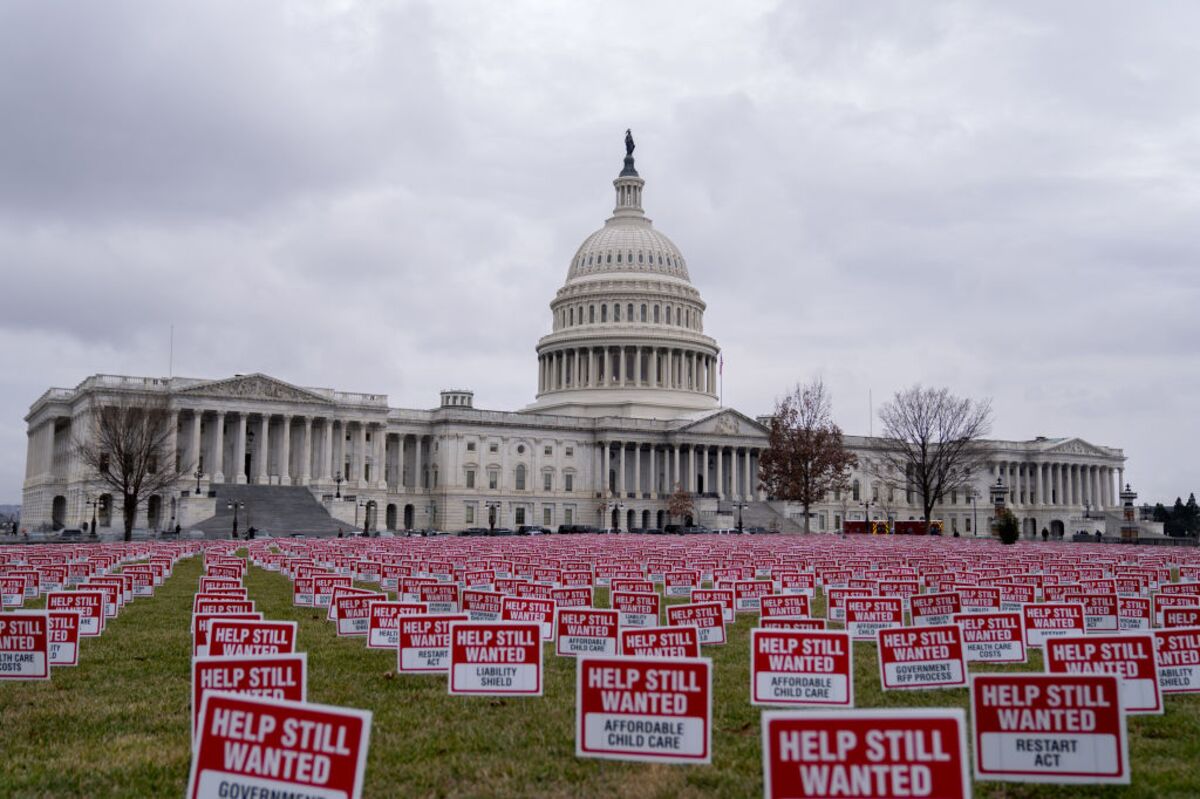
Employment data scheduled to be released tomorrow will refuel ongoing debates about U.S. job growth (or lack thereof) and what to do about it. Regardless, two things are clear: The labor market is in a very strange place — and because it is, the focus of policy should shift to the supply side of the U.S. economy.
There are so many forces at work on the labor market that they are difficult to disentangle: unemployment insurance bonuses, hesitancy over Covid, lack of child care, low wages. Still, after more than a year of debating whether to spend more government money to stimulate the economy, Congress needs to turn its attention to the incentives created by that spending.
During economic downturns, Congress and the Federal Reserve are typically (and rightfully) concerned with stimulating the economy through more spending and cheaper lending. This is known as demand-side stimulus. Then, as things get better, they gradually curtail that spending.
That’s why the debate over whether things are getting better is so important: Too much spending, according to the conventional wisdom, can overheat the economy. At the same time, it’s important to note that, for the past two decades, the primary error policy makers have made is ending stimulus too soon.
This in part explains the host of economists who were somewhere between annoyed and apoplectic at former Treasury Secretary Larry Summers’s warning that the American Rescue Plan would overstimulate the economy and that the Fed might need to think about cutting rates. Summers’s critics were right when they said that the risks of doing too little were greater than the risks of doing too much.
The data, however, have come in largely as Summers feared. Job growth has been below expectations from earlier this year, while inflation has met or exceeded forecasts. So the risk calculus of Summers’s critics, myself included, is shifting.
To be clear, the U.S. economy is nowhere near the point where the Fed should raise interest rates, nor should Congress back off the (relatively modest) bipartisan infrastructure bill. The more ambitious bill still being pushed by Senator Bernie Sanders, however, is a different matter: With a contemplated price tag of up to $6 trillion, it is large enough to be worrying from an inflation perspective, even if moderate Democrats whittle it down.
They should turn their focus to the supply-side incentives in the bill. For example, Democrats have long wanted to expand the number of Medicaid recipients who could receive at-home or community care. The White House has linked that goal with a higher minimum wage for home-care workers, as well as employer mandates designed to encourage unionization.
These types of mandates decrease employer flexibility, worsen the shortage of labor and feed inflation. It would be better if employers — especially those benefiting from stimulus spending — responded to the tight labor market by expanding the pool of workers they are willing to hire, and by spending more money on training them.
That would increase the supply of workers in the labor force and raise the productivity of more marginal workers. Both of those effects would moderate inflation pressures. Wages would still rise as a result of the tight labor market, but accompanied by productivity increases and larger pool of workers, they would be less likely to set off the dreaded wage-price spiral.
Another example: Congressional Democrats want to increase the supply of affordable housing. Any plan to spend more on affordable housing, however, has to include aggressive measures to increase the total supply of housing.
As long as supply is constrained by land-use regulations, efforts to increase affordability will only increase the profit margins of landlords. Housing credit programs like the one envisioned by Vice President Kamala Harris during her campaign would have given more money to low-income and historically disadvantaged tenants — but their new purchasing power would drive up rents overall.
Making it easier to build more homes and denser neighborhoods will put downward pressure on rents in the entire market as well as provide more living space for those who might come to take advantage of a new job. Both of those effects — cheaper rents and more workers in the local labor market — ease inflation pressures.
Analysts and politicians may disagree on whether Covid spending has already been excessive and whether that spending has been deployed in ways that have slowed growth in employment. At the same time, it’s clear that neither the supply of workers nor the goods they produce is increasing fast enough to calm inflation fears. For that reason, Congress should be especially focused on supply-side effects as it debates its next major spending bill.
This column does not necessarily reflect the opinion of the editorial board or Bloomberg LP and its owners.
To contact the editor responsible for this story:
Michael Newman at mnewman43@bloomberg.net
Supply-Side Economics Is What America Needs Right Now - Bloomberg
Read More
No comments:
Post a Comment